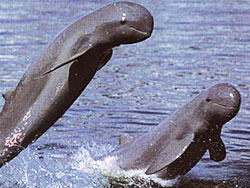PHNOM PENH, Nov. 3 (Xinhua) -- The German airline Condor Air launched
its first direct flight from Frankfurt to Cambodia's Siem Reap
province famous for its world heritage site on Saturday morning.
Landing at the Siem Reap International Airport, the aircraft was cordially greeted by Cambodian government officials including Mao Havannall, secretary of state for civil aviation, and So Mara, secretary of state for tourism ministry.
According to the Cambodia Airports, the operator of Cambodia's international airports, Condor Air operated flights between Frankfurt and Siem Reap province with its B767-300 plane, which can be seated by 270 passengers. The plane will operate one flight a week to Siem Reap province.
Siem Reap, located some 315 kilometers northwest of Phnom Penh, houses the Angkor Wat temple, one of the world heritage sites; it is the country's largest tourism destination.
The Cambodia Airports said that besides Condor Air, Qatar Airways is also expected to start flight between Doha and Phnom Penh from February next year with its A330-300 plane, which can be seated by 305 passengers, and Lao Central Airlines is also due to operate daily flights between Vientiane and Phnom Penh with a B737- 400 aircraft, which can be seated by 168 passengers.
Currently, 25 airlines have been operating at the country's 2 international airports on a scheduled basis, it said.
Landing at the Siem Reap International Airport, the aircraft was cordially greeted by Cambodian government officials including Mao Havannall, secretary of state for civil aviation, and So Mara, secretary of state for tourism ministry.
According to the Cambodia Airports, the operator of Cambodia's international airports, Condor Air operated flights between Frankfurt and Siem Reap province with its B767-300 plane, which can be seated by 270 passengers. The plane will operate one flight a week to Siem Reap province.
Siem Reap, located some 315 kilometers northwest of Phnom Penh, houses the Angkor Wat temple, one of the world heritage sites; it is the country's largest tourism destination.
The Cambodia Airports said that besides Condor Air, Qatar Airways is also expected to start flight between Doha and Phnom Penh from February next year with its A330-300 plane, which can be seated by 305 passengers, and Lao Central Airlines is also due to operate daily flights between Vientiane and Phnom Penh with a B737- 400 aircraft, which can be seated by 168 passengers.
Currently, 25 airlines have been operating at the country's 2 international airports on a scheduled basis, it said.












